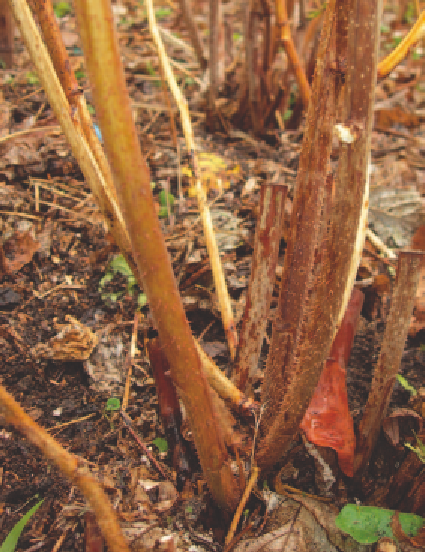Agriculture Reference
In-Depth Information
11
C A N E B E R R I E S
Raspberries
Rubusidaeu
s,
R.idaeus
var.
strigosus
Raspberries fall into two groups: the summer-
fruiting and the autumn-fruiting that can
also produce in summer; but more on this
later. The summer-fruiting raspberries are
generally of better flavour, and by selecting
different varieties can provide a harvest from
early to just after mid summer.
Autumn-fruiting raspberries fruit in late
summer on growth that was produced that
season and then again the next summer
on the same canes if they haven't been
pruned out.
All raspberries are best trained to a trellis or
some sort of support so that the canes can be
securely tied to prevent damage and don't
become a tangled mess! A trellis with a wire at
70 cm high and then another strained at
1.6 metres high will suffice. Plant your berries
in winter slightly deeper than they were in the
pot and cut them back to 20 cm. In their first
season they should not be allowed to fruit.
The plant's energy is best diverted into the
production of a strong root system.
Fruitingwood
Summer-fruiting raspberries fruit on wood
that was produced the previous season. They
are called primocanes in their first year and
floricanes as they enter their second, fruiting
season. Once a cane has borne fruit it should
be removed (see Figure 11.1).
Figure 11.1
It is easy to tell the difference between the
new and the older wood. The spent floricanes on the
right are dark. The future fruiting canes are paler on the
left. Prune out the new growth that is weak.


